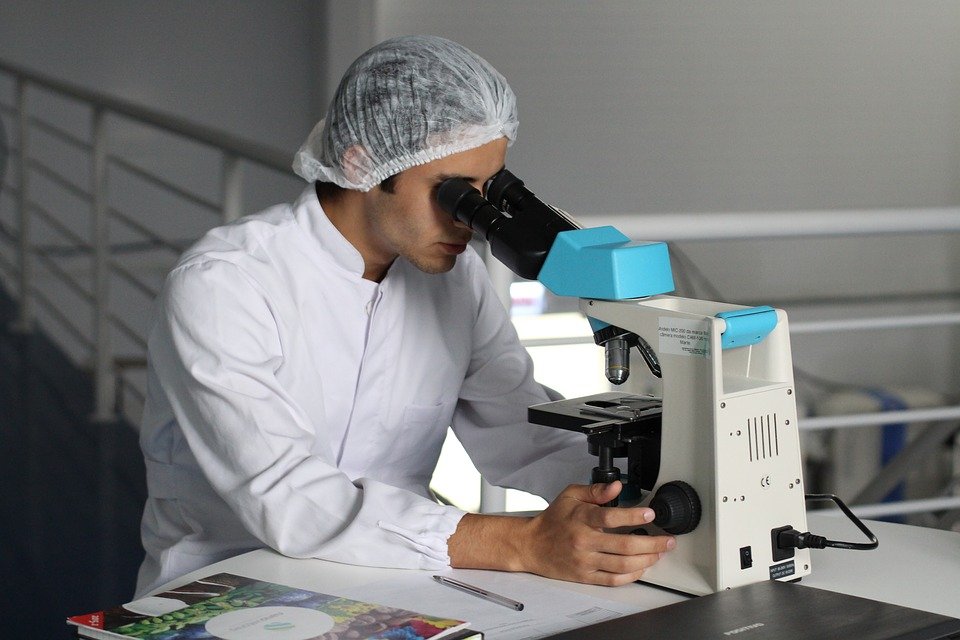'Brain-on-a-chip' test to predict the effects of biological and chemical agents on brain
January 02, 2018 | Tuesday | News
To recreate the regions of the brain, researchers divided the chip into four distinct areas -- three sub-regions and an external region representing the brain's cortex
Scientists and engineers from Lawrence Livermore National Laboratory have developed a 'brain-on-a-chip' device that could be used to test and predict the effects of biological and chemical agents, disease, or pharmaceutical drugs on the brain over time without the need for human or animal subjects.
The device is a part of the Lab's iCHIP (in-vitro Chip-Based Human Investigational Platform) project. It simulates the central nervous system by recording neural activity from multiple brain cell types deposited and grown onto microelectrode arrays.
The platform, described in the journal PLOS One, could help scientists understand how brain cells connect and interact, combat brain disorders, determine how soldiers are affected by exposure to chemical and biological weapons and develop antidotes to counteract those effects.
Dave Soscia, co-lead author and LLNL research engineer said, “While we're not close to the point where we can fully recapitulate a brain outside of the body, this is an important step in terms of increasing complexity of these devices and moving in the right direction. The idea is that eventually the community gets to a point where people are confident enough in the devices that the effects they see from putting chemicals or pharmaceutical drugs into the platform environment are similar to the results we would see in the human body."
To recreate the regions of the brain, researchers divided the chip into four distinct areas -- three sub-regions and an external region representing the brain's cortex. Researchers deposited primary hippocampal and cortical cells onto the electrodes, positioned based on their relative orientation in the brain, using custom-built inserts that can be removed after the cells are placed in the device to allow free communication among the different regions.
The team then monitored the cells' action potential patterns -- the "bursts" of electrical energy that cells emit when communicating -- and observed how the cells interacted over time. The researchers also successfully performed tests with a four-cell insert, to prove more cell types could be used simultaneously.
Scientists said, “the platform is part of LLNL's broader vision for countering emerging and existing threats, allows them to study the networks formed among various regions of the brain, and obtain timely, human-relevant data without animal or human testing. The data would be used to better predict human response to countermeasures, viruses or pharmaceutical drugs, and could help scientists determine if certain types of neurons are more susceptible to exposure.”
Elizabeth Wheeler, iCHIP principal investigator said, “This allows us to come up with a platform that we can use to test how chemical agents would affect the brain. Obviously at a high dose, we know exposure is going to be detrimental, but think about the warfighter who is exposed to a low level of chemical for a long time. Using this device in the future, we might be able to predict how that brain is going to be affected. If we understand how it's affected, then we can develop a countermeasure to protect the warfighter."
Researchers said the technology also is enabling them to see how cells communicate differently when combined with, or located close to, different cell types. Depositing the cells with the micro-fabricated, funnel-like insert allows the insert to be used with any type of chip platform or cell type, because it doesn't require patterning the chip's surface with different chemicals to adhere the cells to it.
“It was very important to us that we didn't have physical barriers, so the cells could grow processes to interact and communicate. Here you literally just put an insert in, pipette the cells through the top of the insert, and it deposits them with precision onto specific regions on the electrode array. And because it's removable, the cells adhere but they have nothing holding them back; they're allowed to grow freely and communicate with the other regions”, Soscia said.
Kris Kulp, LLNL biologist said, “We found that a hippocampal neuron still looks like a hippocampal neuron even if there were cortical neurons present, but they did modify some of their characteristics based on having a different kind of neighbour. They retained their identifying characteristics, but they communicated a little differently."
“With the brain-on-a-chip platform, researchers could analyze how disease spreads through the brain, model epilepsy, or potentially examine the effects of chemical or biological exposure over a timespan of several months.”
The initiative incorporates brain and blood-brain barrier chip-based platforms for applied scientific research. The next step, researchers said, is to expand the brain-on-a-chip device to three dimensions and sort through the data collected thus far to determine how it correlates with in vivo data.










